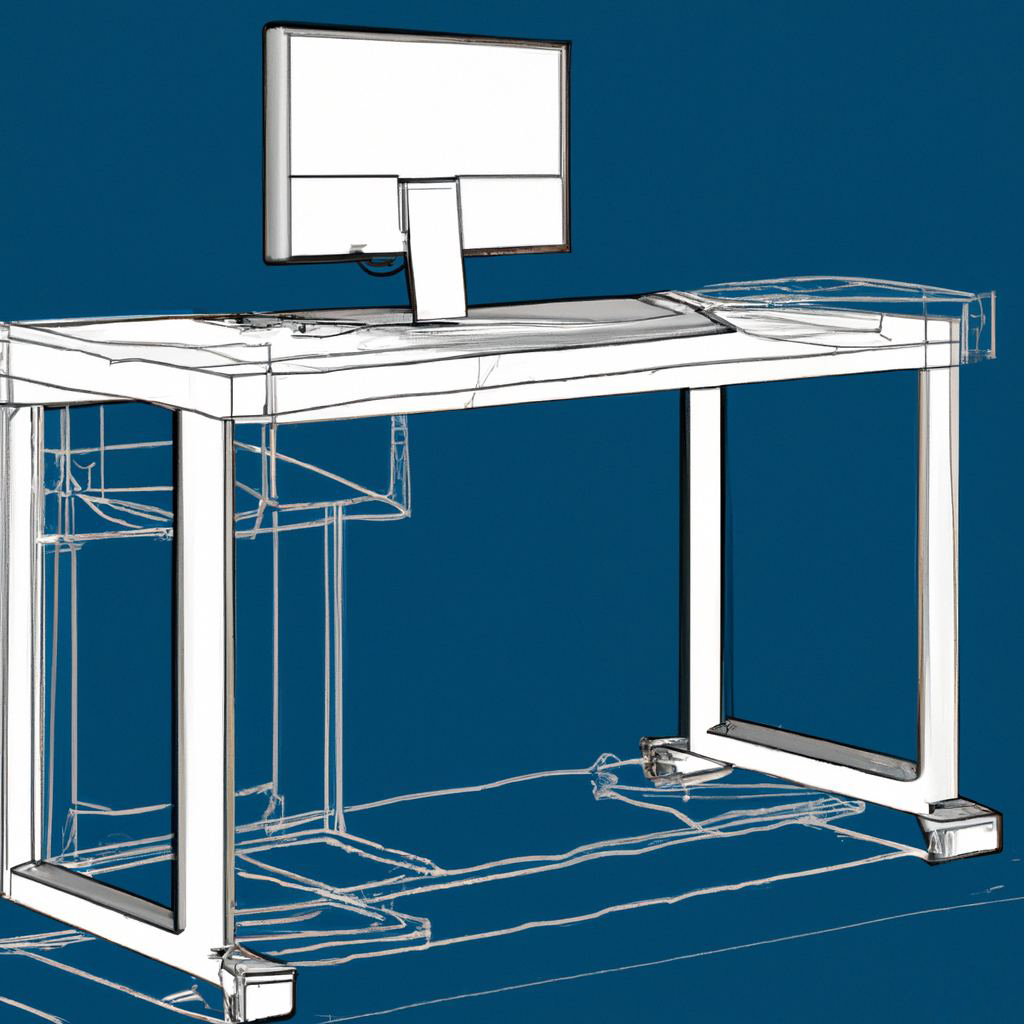
Get a new desk or chair for your work from home setup

Two thirds of U.S. white collar workers reported working from home since the beginning of the pandemic. Naturally, people are looking to optimize their home space for work and optimize their productivity in this new work environment. The ergonomic desk has risen to the occasion and given people not only an elevated workspace but an elevated life. The standing desk brings a multitude of benefits, both mentally and physically, but here are the top four: [1]
Your health and wellness should always come first. Research from the Mayo Clinic has shown that sitting for long periods is not good for us. Sitting for eight hours or more can result in increased blood pressure, high blood sugar and abnormal cholesterol levels. These negative health consequences can lead to obesity, diabetes, and decrease the overall quality of your life. A sedentary lifestyle can even be fatal! This means that sitting at a desk for eight hours is increasing your risk of cardiovascular disease, cancer, and Alzheimers. Researchers have even equated the negative health consequences of a sedentary lifestyle on the same level as obesity and smoking. So these health concerns are no joke! That’s why it’s imperative to take an active approach to combat these health risks – cue the standing desk.
Experts have routinely agreed that movement is the key to keeping these alarming health risks at bay. This means incorporating movement throughout your work day. Standing while you work improves blood flow, burns more calories, and lowers blood sugar and cholesterol levels. This 2013 study found that office workers who stand for 185 minutes per day reduced blood sugar levels by 43%.
Reducing your blood sugar, blood pressure, and regulating cholesterol will have a positive impact on your overall health. Consequently, this lowers your likelihood of developing serious life threatening conditions. However, an ergonomic desk should be used in tandem with other measures to improve the overall quality of your life. Engaging in regular exercise and maintaining a healthy diet will help in ensuring your health and wellbeing beyond the workplace.
Along with the health implications, long term periods of sitting can impose serious stress on your spine. Yale medicine psychiatrist, Erik K. Holder, MD, reported that “prolonged sitting is one of the main causes for many of the conditions treated in my musculoskeletal clinic.” Spinal stress can result a number of factors. Some factors include poor posture while sitting, craning the neck while looking at the computer screen, or a combination of the two. Thus, an ergonomic work setup is necessary to relieve spinal stress and prevent back pain.
A standing desk is the first stop when creating an ergonomic work space. Investing in a standing desk, like this one[2] , has a positive impact. It can lead to a reduction in musculoskeletal conditions like tennis elbow (occurs when your elbow is overworked and the tendon becomes inflamed) and carpal tunnel syndrome (a condition that causes pain and numbness in the hand and forearm).
The ergonomics promoted by a standing desk also prevent your shoulders from rolling forward, as they tend to do when you’re sitting and slouching. When you’re standing, you are engaging your core. An engaged core results in strengthening your abdominal muscles and the muscles in your back. These changes in posture and muscle use result in a reduction in the strain on your neck and back. In a study done in 2011, participants found that using a standing desk for an average of 55 minutes per day reduced their back pain by 54%.
Improving the ergonomics of your workspace not only provides health benefits, it improves productivity flows as well. With a standing desk, your blood flow is increased and stress on the neck, shoulder, and back is decreased. Researchers in this study examined the behavioral changes of workers given standing desks and found that 65% of participants who received standing desks reported higher rates of productivity after 6 months. In another study researchers examined the differences in productivity between two groups of call center workers. They found that workers who had standing desks were 46% more productive.
This news has not fallen on deaf ears! Many companies have even started investing in standing desks for their wellness programs. These programs aim to improve the health and happiness of employees, and of course, the increased productivity rates doesn’t hurt either. A standing desk is a win-win, you improve your health while improving your productivity.
Speaking of happiness, work productivity is not only determined by physical factors! Happiness can also be dependent on mood and mental health. An Australian study found that time spent sitting down resulted in higher rates of anxiety and depression, and overall poorer psychological health. Using a standing desk combats these psychological symptoms by increasing blood flow to the brain and muscles. The Take-a-Stand Project studied the overall mood of workers introduced to standing desks and found that participants reported elevated energy levels and mood. Notably, when the standing desks were removed, the elevated energy levels and improved mood left with the desks.
It doesn’t take a scientist to conclude that standing desks make a big impact on mental health! Prioritizing your mental health has never been more important. However, please note that it may take more than a standing desk to improve your mental health. If you feel that your mental health is negatively impacting your day to day life, you should consult with a mental health professional and get care tailored to your needs.[3]
In conclusion, while a standing desk may not be a cure all to common workplace gripes, it certainly comes close to addressing the major health and wellness concerns. There’s just no way around it, sitting for long periods of time while working is not good for you, your body or your mind. Prioritizing your health and wellness will always be more important than any work project, so if you’re finding yourself with health concerns, low energy and mood, or low productivity, it’s time to start incorporating movement and ergonomics into your work life. Building an ergonomic office space is more than just a desk, it’s a way to prioritize your health and wellness and maximize your productivity. [4]
Learn More
Learn More
Contact Us
Read Story
Sign up for our newsletter to get
updates straight to your inbox.
We’re Here To Help
Available Monday through Friday, 9am to 6pm EST.
Learn More
Learn More
Contact Us
Read Story